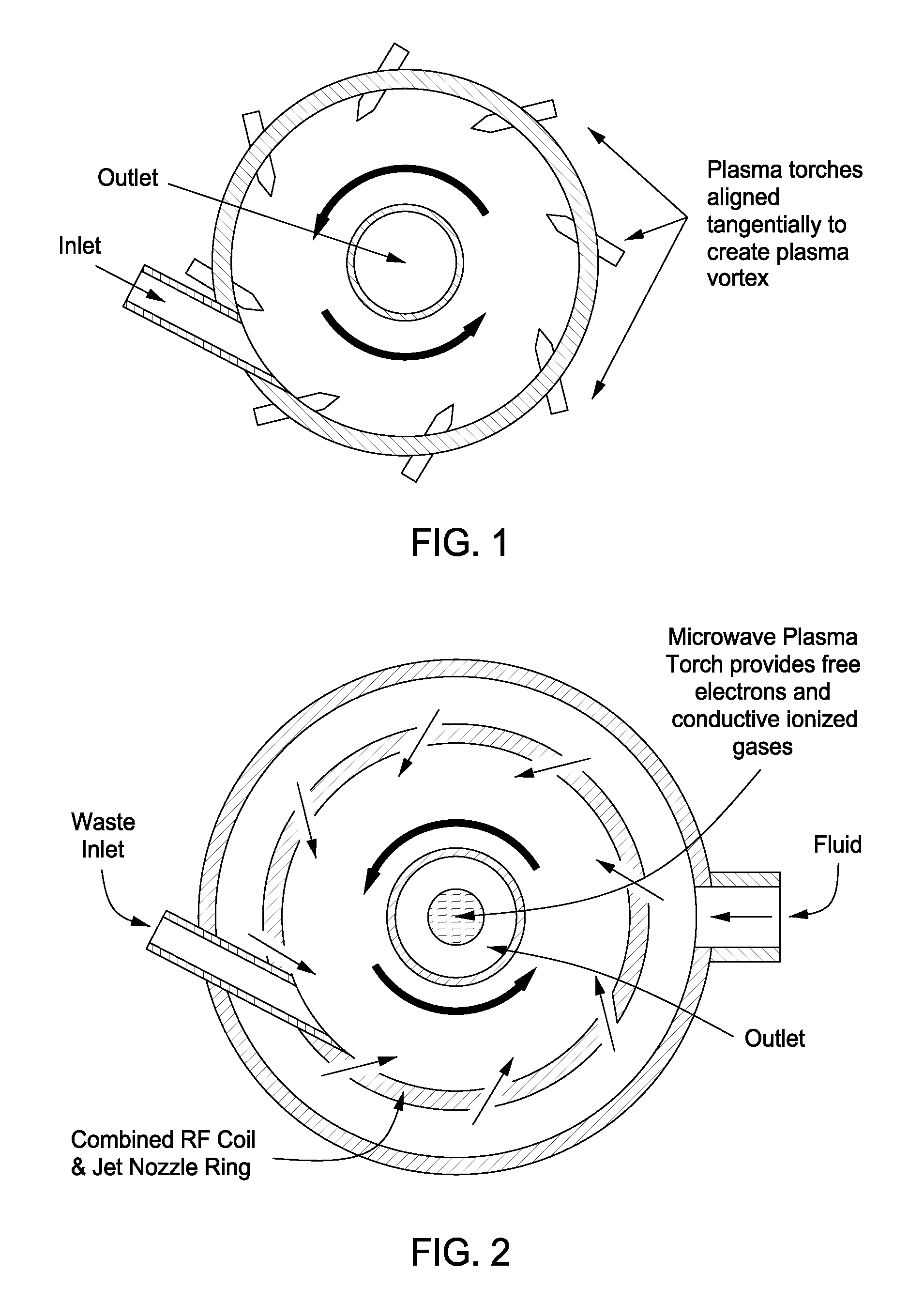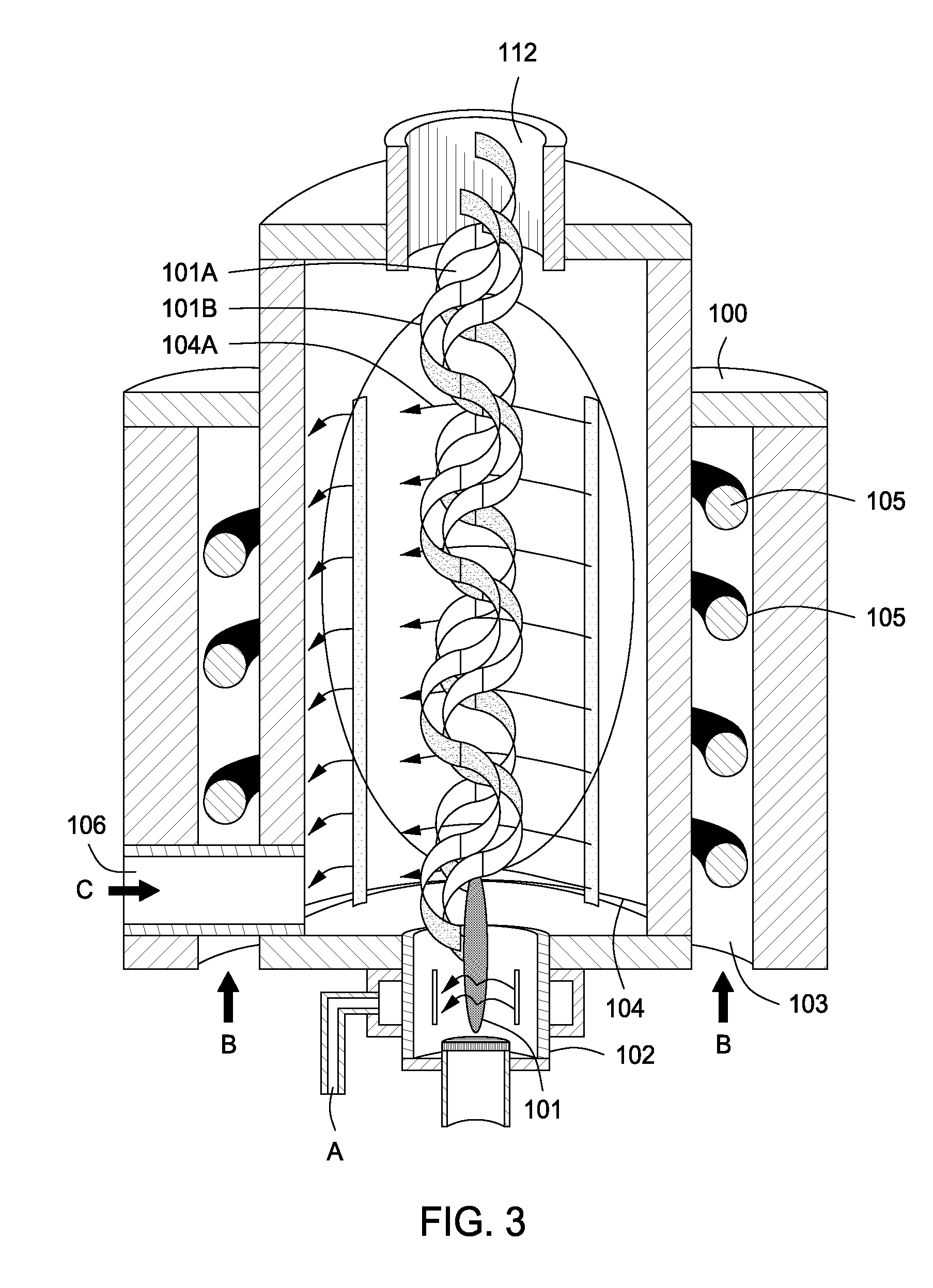The vented or flared gas is a wasted and untapped source of energy.
The disposal of the separated shale and cuttings is a complex environmental problem.
Drill cuttings contain not only the mud product that can contaminate the environment, but also typically contain oil that is particularly hazardous to the environment, especially when drilling in a marine environment.
Unburned or unreacted carbon has plagued several other industries and / or processes, such as olefin plants in the
petrochemical industry.
The
petrochemical industry, as well as the refining industry, has been plagued with Volatile Organic Carbon (VOC) emission releases, as well as
solid waste release problems.
A valuable resource is being wasted by flaring such a gas with the end product being
carbon dioxide, a green house gas, with the potential for releasing toxic emissions.
In addition, with the new low-
sulfur diesel regulations on the
horizon, vast amounts of
hydrogen will be required for hydro-treating processes used in refineries to reduce the
heteroatom content of fuel products.
Many oil and gas companies are finding it uneconomical to fund conventional process units utilizing steel and concrete.
Regeneration of spent
sulfuric acid is two to three times as expensive as acid made directly made from
sulfur.
The disposal of spent
sulfuric acid is an ever increasing problem because of environmental regulations that are becoming more and more stringent.
However, this approach has not been widely adopted in the
market place because
oxygen enrichment leads to an increase in the furnace
flame temperature, including localized hot spots.
These hot spots have a detrimental effect on the materials of construction of the
combustor and oxygen constitutes an additional cost of production that the regeneration facility has to incur.
While faced with the need to expand capacity, refineries are often limited by both
physical space and environmental restraints from expanding capacity of these process units, for example, by the addition of furnaces or
converters.
As previously stated, refineries will have to make dramatic and costly capital investments in order to process low quality crudes, such as those produced in Mexico and Venezuela.
Also, additional expenditures will be required for increased hydro-treating capacity in order to produce low sulfur distillates.
For example, animal feeding operations (AFO) produce large amounts of
manure that runs off into local waterways creating a
pollution problem.
Phosphorous in the
animal waste has been linked to causing hypoxia in receiving waters.
Transportation costs for hauling these additives to the farm, or the
animal waste to the site where the additive is produced, is cost prohibitive.
Many smelters in the BPA region had already closed their
doors because
high energy prices made aluminum production unprofitable.
BPA can only produce 8,000 megawatts.
The
red mud is typically stockpiled on-site since, resulting in the accumulation of ever-increasing amounts of
red mud at the
plant site.
In combination with rising energy costs and environmental issues, the
aluminum industry is in great need of technologies for producing clean fuel or energy while simultaneously producing a useful byproduct from
red mud.
The major problem with such a process is that the process requires copious amounts of water.
Another problem associated with organic fluids forming emulsions in the dense medium
separation process is that the metals may be covered or coated with organic fluids.
This in itself presents a recycling problem.
Although the price of the metals is not affected, the metals recycling facility must take precautions due to the potential for emissions of the organic fluids.
This problem is more common with aluminum
ingot manufacturing from aluminum turnings from
machine shops and fabrication facilities.
This problem has plagued aluminum recycling facilities.
Likewise, the paint on aluminum cans present a problem when recycling aluminum cans.
In addition, the regulations will limit the amount of fluff that can be disposed of in a landfill.
In combination with the constant development of
new materials and chemicals having environmental effects, this leads to increasing problems at the waste stage.
The growth of WEEE is about three times higher than the growth of the average municipal waste.2. Because of their hazardous content, electrical and
electronic equipment cause major environmental problems during the
waste management phase if not properly pre-treated.
However, a drawback to diesel engines is its exhaust emissions.
Under
heavy load conditions, when the air / fuel mixture is too rich, the burning of the
hydrogen element of hydrocarbons (HC) predominates, resulting in an excess of the unburned carbon element.
The disposal or final depositary for radioactive wastes is a major problem from both financial and environmental concerns.
Former nuclear weapons production sites face even more significant problems with
radioactive waste management.
Furthermore, combining the
comminution stage, reaction stage and separation stage is completely atypical for
plasma processes and apparatuses.
 Login to View More
Login to View More 


